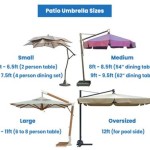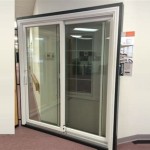Build Patio Cover Plans: Extending Your Outdoor Living Space
A patio cover can transform an outdoor space, offering protection from the elements and creating a comfortable area for relaxation and entertainment. Careful planning is crucial for a successful patio cover construction project. This article explores considerations for patio cover plans, encompassing design choices, material selection, structural integrity, and essential planning considerations.
Understanding Patio Cover Designs
The design of a patio cover should complement the existing architecture of the house while meeting the specific needs of the homeowner. Several design options are available, each with its own advantages and aesthetic appeal.
A simple and cost-effective option is the attached patio cover, which extends directly from the house. This type typically involves attaching a ledger board to the existing structure and supporting the cover with posts. Attached covers can be designed to match the roofline of the house, providing a seamless transition between indoor and outdoor spaces.
Freestanding patio covers, also known as pergolas or gazebos, offer more flexibility in terms of placement and design. These structures are independent of the house and can be located anywhere in the yard. Freestanding covers can be customized with various roof styles, including open lattice, solid roofs, or a combination of both.
Retractable patio covers provide the versatility of both sun and shade. These covers use motorized or manual systems to extend or retract the roof as needed. Retractable options are suitable for homeowners who want to control the amount of sunlight reaching their patio.
Considerations for design include the size and shape of the patio, the desired level of shade, and the overall aesthetic goals. The roof pitch, post placement, and material selection should be carefully considered to ensure a functional and visually appealing structure.
Material Selection for Longevity and Aesthetics
Choosing the right materials is essential for ensuring the durability and longevity of a patio cover. The materials should be able to withstand the local climate and require minimal maintenance.
Wood is a popular choice for patio covers due to its natural beauty and versatility. Redwood, cedar, and pressure-treated lumber are commonly used for their resistance to rot and insects. Wood can be stained or painted to match the house or create a contrasting look. However, wood requires regular maintenance, such as cleaning, staining, or painting, to prevent weathering and decay.
Aluminum is a lightweight and durable material that is resistant to rust and corrosion. Aluminum patio covers are available in a variety of colors and styles, and they require minimal maintenance. Aluminum is a good option for homeowners who want a low-maintenance patio cover that will last for many years.
Vinyl is another low-maintenance option for patio covers. Vinyl is resistant to moisture, rot, and insects, and it does not require painting or staining. Vinyl patio covers are available in a range of colors and textures, and they can be designed to mimic the look of wood.
Fabric awnings and shade sails offer a flexible and affordable way to provide shade for a patio. These materials are available in a wide variety of colors and patterns, and they can be easily installed and removed. Fabric awnings and shade sails are a good option for homeowners who want a temporary or seasonal patio cover.
The selection of roofing materials also impacts the overall aesthetic and functionality of the patio cover. Options include shingles, metal roofing, polycarbonate panels, and lattice. Shingles provide a traditional look and offer excellent weather protection. Metal roofing is durable and long-lasting, while polycarbonate panels allow natural light to pass through. Lattice provides partial shade and creates a visually appealing design.
Structural Planning and Building Codes
Ensuring the structural integrity of a patio cover is essential for safety and longevity. The design must comply with local building codes and regulations, which vary depending on the location and the size of the structure.
A building permit is typically required for patio covers that are attached to the house or that exceed a certain size. The permit process involves submitting detailed plans to the local building department for review and approval. The plans must show the dimensions of the patio cover, the materials used, and the structural details.
The foundation of the patio cover must be strong enough to support the weight of the structure and withstand wind and snow loads. Concrete footings are typically used to provide a stable base for the posts. The size and depth of the footings depend on the soil conditions and the dimensions of the patio cover.
The posts should be spaced appropriately to provide adequate support for the roof. The spacing depends on the type of materials used and the roof load. The posts should be securely attached to the footings and the roof structure. Proper anchoring is crucial for preventing the patio cover from shifting or collapsing during high winds.
The roof structure should be designed to withstand the weight of the roofing materials and any accumulated snow or debris. Rafters, beams, and purlins should be properly sized and spaced to provide adequate support. The connections between the roof components should be strong and secure.
It is recommended to consult with a qualified engineer or contractor to ensure that the patio cover is structurally sound and complies with all applicable building codes. This is especially important for complex designs or in areas with high winds or heavy snow loads.
Essential Planning Considerations
Before starting construction, several planning considerations should be addressed to ensure a smooth and successful project.
The budget for the patio cover should be clearly defined and realistic. The cost of materials, labor, permits, and any necessary tools should be included in the budget. It is advisable to obtain quotes from multiple suppliers and contractors to compare prices and ensure that the budget is adequate.
The timeline for the project should be established, taking into account the time required for planning, permitting, material procurement, and construction. The timeline should be realistic and allow for unexpected delays. Weather conditions can also affect the timeline, especially for outdoor projects.
The layout of the patio cover should be carefully planned to maximize the use of the space and to complement the existing landscaping. Consider the placement of furniture, outdoor lighting, and any other amenities that will be added to the patio. The layout should also take into account the sun's path and the prevailing winds to optimize shade and ventilation.
Utility lines should be located and marked before digging any holes for the footings. Contact the local utility companies to request a locate service, which will identify any underground utilities in the area. Avoid digging near utility lines to prevent damage and potential hazards.
Tools and equipment should be gathered before starting construction. Essential tools include a saw, drill, level, measuring tape, hammer, and safety glasses. Specialized tools may be required depending on the type of materials used and the complexity of the design.
Safety precautions should be followed at all times during construction. Wear appropriate safety gear, such as safety glasses, gloves, and a hard hat. Use caution when working with power tools and follow the manufacturer's instructions. Ensure that the work area is well-lit and free of hazards.
Proper drainage is essential for preventing water damage to the patio cover and the surrounding area. The patio should be sloped slightly away from the house to allow water to drain away. Gutters and downspouts can be added to the patio cover to collect rainwater and direct it away from the structure.

Patio Cover Plans Build Your Or Deck

Patio Cover Plans Build Your Or Deck

Building A Patio Cover Plans For An Almost Free Standing Roof

Patio Cover Plans Build Your Or Deck

Building A Patio Cover Plans For An Almost Free Standing Roof

Patio Cover Plans Gardenplansfree Covered Design Diy

Patio Cover Plans Build Your Or Deck

Patio Cover Free Diy Plans Howtospecialist How To Build Step By

Patio Cover Plans Wood S Creative Builders

Patio Cover Plans Build Your Or Deck Diy Covered








